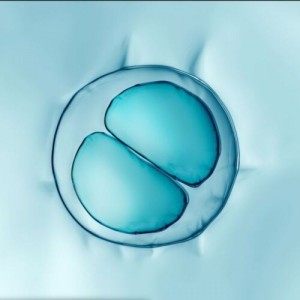An investigation of predictors of renal insufficiency following treatment of hyperthyroidism in cats
To determine if routine pre-treatment clinical data can be used to predict the development of overt renal insufficiency following treatment of feline hyperthyroidism, we studied retrospectively all non-azotemic cats undergoing treatment for hyperthyroidism at our hospital. Medical records were reviewed for signalment, clinical signs, and serum biochemical, hematologic and urinalysis parameters before and after treatment for hyperthyroidism. Two groups – cats that developed post-treatment renal insufficiency, and those that did not – were compared. No significant differences could be detected between the groups with respect to the parameters measured. Our study suggests that the results of routine pre-treatment clinical data cannot be used to reliably predict renal function after treatment for hyperthyroidism, validating the necessity of a methimazole trial prior to definitive therapy. The widely held belief that cats with pre-treatment urine specific gravity>1.035 are at less risk for development of renal azotemia after treatment of hyperthyroidism seems unwarranted.
Renal failure is diagnosed commonly in feline medicine, with nearly 30% of cats over 15 years of age being affected (Plantinga et al 2005). Hyperthyroidism is the most common endocrine disorder diagnosed in cats, with an increasing incidence since the first documented cases in 1979 (Broussard et al 1995, Mooney and Thoday 2000, Mooney 2005). Renal disease can often be masked by the hyperthyroid state. Excess thyroid hormone can increase cardiac output while decreasing peripheral vascular resistance, causing increased glomerular filtration rate (GFR) as a result of increased renal plasma flow (Bradley et al 1974, Adams et al 1997a, Klein and Ojamaa 2001, Langston and Reine 2006). One study showed that 15% of hyperthyroid cats treated with radioiodine developed overt renal disease during a 13–18-month follow-up period (Slater et al 1994).
Previous studies have shown that mean GFR is increased in hyperthyroid cats and that treatment of hyperthyroidism leads to decreases in GFR as well as an increase in serum urea nitrogen (SUN) concentrations (Graves et al 1994, DiBartola et al 1996, Becker et al 2000). Oral medication (most commonly methimazole) is often used to control hyperthyroidism (Peterson et al 1988, Trepanier 2006). The effects of methimazole on renal function are often reversible. One study reported that GFR in two cats treated for hyperthyroidism increased after cessation of methimazole, but did not return to pre-treatment values (Becker et al 2000). Still, it is widely recommended that cats with hyperthyroidism be treated initially with methimazole because its effects can be largely reversed should renal insufficiency develop. There are disadvantages with the use of methimazole, however, including the need for twice daily dosing, and the development of side effects such as facial excoriations, gastrointestinal upset, blood dyscrasias, and hepatotoxicity (Peterson et al 1988, Mooney 2001, Trepanier 2006).
Definitive treatments for feline hyperthyroidism, such as thyroidectomy or radioiodine, are attractive alternatives to life-long anti-thyroid drug therapy because owner satisfaction is high. Radioiodine treatment, where available, is preferred to surgery because it is non-invasive, safe, and effective (Turrel et al 1984, Slater et al 1994, Peterson and Becker 1995, Mooney and Thoday 2000, Mooney 2005). Because an irreversible decline in renal function occurs with definitive treatment, it may be prudent to assess renal function once euthyroidism has been achieved. There are anecdotal reports that cats with normal SUN and serum creatinine concentrations, and with urine specific gravity (USG) measurements greater than 1.035, have a reduced risk for the development of renal insufficiency after treatment for hyperthyroidism (Mooney 2005, Garrett 2006). To our knowledge, no studies evaluating this claim have been published.
Pre-treatment GFR is also reported to be a predictor of post-treatment renal failure, with one study reporting that a pre-treatment GFR of less than 2.25 ml/kg/min was 100% sensitive and 78% specific for post-treatment renal failure (Adams et al 1997b). In that study, 15 of 22 cats were azotemic 30 days after treatment with radioiodine, although nine of these cats were also azotemic before treatment. The seven cats in that study that did not develop azotemia within 30 days of treatment all had GFR measurements above 2.25 ml/kg/min. In other studies, however, cats with pre-treatment GFR measurements considerably higher than 2.25 ml/kg/min were azotemic 30 days after treatment of hyperthyroidism (Graves et al 1994, DiBartola et al 1996), so the use of GFR measurement as a predictor of post-treatment renal function is controversial.
The ability to predict which cats will develop renal insufficiency after treatment of hyperthyroidism could help to guide treatment decisions and may result in decreased morbidity for cats. For that reason we have examined common pre-treatment clinical data from cats with hyperthyroidism, and have sought to identify predictors of post-treatment renal insufficiency.
Authors: Melissa R. Riensche, Thomas K. Graves, David J. Schaeffer
Source: https://journals.sagepub.com/














List
Add
Please enter a comment